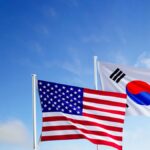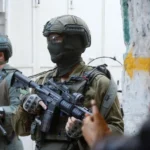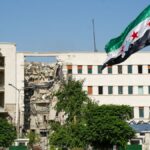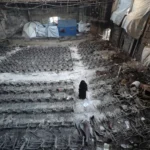Table of Contents
The U.S.-Iran nuclear talks, which have been stalled for years, are making a cautious comeback. After the United States withdrew from the 2015 Iran nuclear deal, formally known as the Joint Comprehensive Plan of Action (JCPOA), under President Donald Trump in 2018, relations between the two nations grew colder. However, recent developments have shown that both sides may be willing to engage diplomatically once again.
The First Meeting in Seven Years
This past weekend, U.S. and Iranian officials held their first face-to-face meeting in seven years, hosted in Oman. The main objective of these indirect talks was clear: to kickstart further diplomacy around Iran’s nuclear program. With both nations significantly impacted by the consequences of the nuclear standoff, these talks offered a glimmer of hope for potential breakthroughs.
The meeting, while indirect in nature, was deemed “constructive” by both sides. The Omani foreign minister facilitated the talks, shuttling between the U.S. and Iranian delegations. The delegations agreed to hold another round of talks on April 19, also in Oman, continuing the indirect dialogue.
Key Issues on the Table
At the heart of the discussions is Iran’s nuclear program and the lifting of sanctions that have crippled its economy. Iran has continuously asserted that its nuclear ambitions are strictly peaceful, and it is seeking the international community’s recognition of this claim. In exchange for sanction relief, Iran hopes to build trust and provide assurances that its nuclear activities will not be weaponized.
From the U.S. perspective, however, the focus remains on dismantling Iran’s nuclear infrastructure. U.S. officials have repeatedly stated that the goal is to ensure Iran does not develop nuclear weapons. While the Biden administration has been somewhat flexible, U.S. Special Envoy to the Middle East Steve Witkoff emphasized before the trip that dismantling Iran’s nuclear capabilities is the fundamental starting point for talks.
The negotiations are expected to be difficult, and while some room for compromise exists, there are still several hurdles to overcome. Iran’s position remains firmly rooted in its demand for sanctions relief and guarantees about its peaceful nuclear program. In contrast, the U.S. remains focused on dismantling key elements of the nuclear program, while being open to negotiations on other issues like regional security and military actions at the margins.
The Impact of Regional Tensions
Regional dynamics play a significant role in these talks. Iran’s support for regional proxies like Hezbollah and Hamas has been a source of tension, and its missile program continues to raise alarms. Although these issues were not on the table for the current discussions, the ongoing instability in the Middle East might eventually push them into the spotlight.
The recent escalation in tensions between Iran and Israel, particularly Israel’s direct attacks on Iran’s military facilities, has also placed Iran in a weakened position. Tehran’s air defenses were severely damaged in Israel’s largest-ever attack in October 2024, making its nuclear sites more vulnerable to future strikes.
Moreover, Iran’s economic decline, largely due to the sanctions imposed by the U.S., is further pushing Tehran to seek a resolution. The financial strain has led to protests and a sense of growing instability within the country, prompting some to argue that Iran is more inclined to seek a diplomatic settlement.
The Role of the P5+1 Countries
While the U.S. and Iran have taken the lead in the discussions, the role of the P5+1 (the five permanent members of the U.N. Security Council—China, France, Russia, the U.K., and the U.S.—plus Germany) remains crucial. In previous talks, these countries were heavily involved in negotiations, but so far, they have not been included in the most recent discussions.
However, the P5+1 countries are closely monitoring the situation. Russia and China have shown a willingness to support Iran, with Moscow offering to mediate between the parties. Meanwhile, European powers like France, Germany, and the U.K. are keeping a watchful eye on the talks, particularly to ensure that any agreement does not compromise their own security interests.
The absence of direct involvement from the P5+1 at this stage does not signal their disengagement. Instead, it reflects a more bilateral approach, which was also the foundation of the 2015 deal. If progress is made, the P5+1 could once again play a vital role in providing diplomatic and technical support for any potential agreement.
Looking Ahead: What’s Next?
As the talks move forward, the international community is eager to see whether these indirect discussions can lead to tangible progress. While many challenges remain—especially surrounding the dismantling of Iran’s nuclear program and the lifting of sanctions—there is a sense of cautious optimism that this round of talks may open the door to broader negotiations.
The key question is whether both sides can find a middle ground. Will Iran’s insistence on its right to a peaceful nuclear program be reconciled with U.S. demands for dismantlement? Can the regional security concerns and the missile issue be addressed without derailing the talks?
The outcome of these discussions will have significant implications for both regional and global stability. It is still too early to predict a successful outcome, but the fact that diplomacy is back on the table after a seven-year hiatus is a positive sign.
As we await the next round of talks, all eyes will be on Oman once again. The stakes are high, and the world is watching closely to see if the U.S. and Iran can build a lasting framework for peace that addresses the nuclear threat and paves the way for greater cooperation in the Middle East.
Conclusion
The resumption of U.S.-Iran nuclear talks marks a critical moment in the ongoing quest for a peaceful resolution to the nuclear issue. Despite the deep divisions that still exist between the two nations, the diplomatic door has been opened, and it is up to both parties to continue the dialogue. As the next round of talks approaches, it is clear that both sides are committed to finding common ground, even if the path forward remains fraught with challenges.
For further updates on the ongoing U.S.-Iran nuclear talks and other global diplomatic developments, stay tuned to worldaffairs.org.
Author Profile
- Syed Tahir Abbas is a Master's student at Southwest University, Chongqing, specializing in international relations and sustainable development. His research focuses on U.S.-China diplomacy, global geopolitics, and the role of education in shaping international policies. Syed has contributed to academic discussions on political dynamics, economic growth, and sustainable energy, aiming to offer fresh insights into global affairs.
Latest entries
 GeopoliticsAugust 23, 2025Previewing the White House Visit of South Korean President Lee Jae Myung
GeopoliticsAugust 23, 2025Previewing the White House Visit of South Korean President Lee Jae Myung Middle East ConflictJuly 22, 2025Israel’s Deadly Attacks on Gaza: A Dire Humanitarian Crisis and International Calls for a Truce
Middle East ConflictJuly 22, 2025Israel’s Deadly Attacks on Gaza: A Dire Humanitarian Crisis and International Calls for a Truce Middle East & North AfricaJuly 20, 2025Israel Targets Damascus Amid Rising Tensions in Syria
Middle East & North AfricaJuly 20, 2025Israel Targets Damascus Amid Rising Tensions in Syria Middle East AffairsJuly 14, 2025An Open Letter from Gaza’s University Presidents: Resisting Scholasticide Through Education
Middle East AffairsJuly 14, 2025An Open Letter from Gaza’s University Presidents: Resisting Scholasticide Through Education


